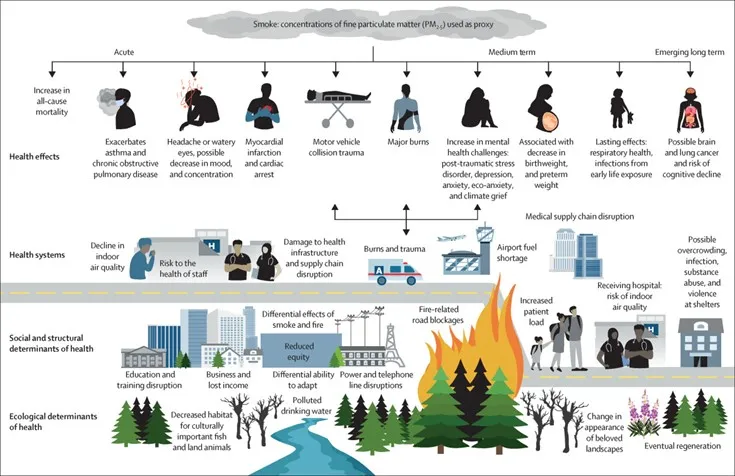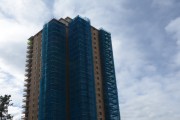In 2023 in Alberta, 1,088 wildfires burned 2.2 million hectares from March 1 to October 31 — a record year far exceeding the five-year average of 226,000 hectares. This year is more than triple the five-year average, with 704,000 hectares burned (a larger area than metropolitan Calgary). Our climate is changing, and our homes and lives need to change with it.
While the immediate threat of fire is the headline issue, as seen this past month with the devastating Jasper wildfire, we shouldn’t forget about the impacts of smoke. Wildfires create particulate matter and other pollutants that can lead to lung damage, cardiovascular issues, cancer, and more, as we discuss in our new report, Healthy Buildings in a Changing Climate. The report recommends strategic investments in deep retrofits to enhance occupant health and resilience against extreme weather and highlights the need for coordinated efforts from all orders of government, utilities, insurance and investment sectors, and building owners to keep Canadians healthy and safe. As the health risks to building occupants grow, so do associated health care costs. It’s time to reframe the business case for deep retrofits. A cross-sector approach is needed to clarify the business value of incorporating measures to proactively protect the health of building occupants.

Health Canada recently released Human Health Effects of Wildfire Smoke, a study that demonstrates how wildfire smoke increases the demand for health care services. During wildfire smoke events there are more emergency room visits, hospital admissions, physician visits, and pharmacy uses, putting pressure on already strained health care resources. The report authors identify impacts to personal health, including increased mortality and morbidity, such as:
• Increased respiratory illness among women, children, and seniors;
• Increased risk of cardiovascular events for seniors; and
• Significant association with asthma and chronic obstructive pulmonary disease.
The study also underscores the major risk that wildfire smoke presents to the following specific demographics, with their approximate sizes according to Alberta Health Services:
• Seniors and children (who make up a third of Alberta’s population);
• Women (more than half Alberta’s population), especially those who are pregnant;
• Indigenous people (7% of people living within the borders of Alberta);
• Socioeconomically disadvantaged people (15% low income, 29% of non-census families);
• People with pre-existing health conditions such as being overweight or obese (64%), having chronic hypertension (20%), and living with diabetes (9%);
• Smokers (15%).
The majority of buildings in Alberta were built before 1996, when regulations to promote energy efficiency were beginning to be put in place. As the energy systems of these buildings come due for replacement, this creates an opportunity to deep retrofit, adding adaptation measures that help alleviate health risks and protect against climate impacts.
A deep retrofit goes beyond simple renovations. It encompasses upgrades to building systems and equipment like windows, walls and roofs, heating, air conditioning, ventilation, filtration, and building controls. MyHealth Alberta lists some tactics for protecting against wildfire smoke such as sealing leaky buildings, installing mechanical ventilation, and providing air filtration that can ensure residents are breathing filtered indoor air even when windows need to stay closed. For example, the first pass through high-performance filters, such as HEPA or MERV 13 filters, can remove as much as 50% of particulate matter before the air even enters a home.
Vulnerable populations who may depend on social housing are at additional risk given the average Alberta Social Housing Corporation (ASHC) building is about 35 years old and “in need of upgrades and repairs before they can be occupied.” According to its asset management framework, ASHC intends to sell or transfer these properties but retain a regulatory control. Regulations that incorporate climate adaptation need to be considered. Governments, utilities, insurance and investment sector representatives, and building owners need to proactively plan for occupant health outcomes in their asset management planning and treat occupant health planning as the life-saving essential that it is.
"Wildfire season" is no longer just a possibility in our new climate reality. Smoke has become a seasonal occurrence in Alberta, and we need immediate, cross-sector action to adapt our homes to protect us. Deep retrofits are no-regrets solutions that protect us from wildfire smoke, lower our contribution to climate change, and increase the affordability of heating and cooling. Stay tuned for a deeper dive into the scale of risk Albertans are living with as the impacts of climate change continue to rise.









